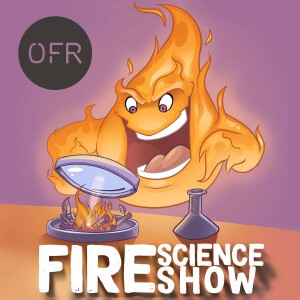
- Podcast Features
-
Monetization
-
Ads Marketplace
Join Ads Marketplace to earn through podcast sponsorships.
-
PodAds
Manage your ads with dynamic ad insertion capability.
-
Apple Podcasts Subscriptions Integration
Monetize with Apple Podcasts Subscriptions via Podbean.
-
Live Streaming
Earn rewards and recurring income from Fan Club membership.
-
Ads Marketplace
- Podbean App
-
Help and Support
-
Help Center
Get the answers and support you need.
-
Podbean Academy
Resources and guides to launch, grow, and monetize podcast.
-
Podbean Blog
Stay updated with the latest podcasting tips and trends.
-
What’s New
Check out our newest and recently released features!
-
Podcasting Smarter
Podcast interviews, best practices, and helpful tips.
-
Help Center
-
Popular Topics
-
How to Start a Podcast
The step-by-step guide to start your own podcast.
-
How to Start a Live Podcast
Create the best live podcast and engage your audience.
-
How to Monetize a Podcast
Tips on making the decision to monetize your podcast.
-
How to Promote Your Podcast
The best ways to get more eyes and ears on your podcast.
-
Podcast Advertising 101
Everything you need to know about podcast advertising.
-
Mobile Podcast Recording Guide
The ultimate guide to recording a podcast on your phone.
-
How to Use Group Recording
Steps to set up and use group recording in the Podbean app.
-
How to Start a Podcast
-
Podcasting
- Podcast Features
-
Monetization
-
Ads Marketplace
Join Ads Marketplace to earn through podcast sponsorships.
-
PodAds
Manage your ads with dynamic ad insertion capability.
-
Apple Podcasts Subscriptions Integration
Monetize with Apple Podcasts Subscriptions via Podbean.
-
Live Streaming
Earn rewards and recurring income from Fan Club membership.
-
Ads Marketplace
- Podbean App
- Advertisers
- Enterprise
- Pricing
-
Resources
-
Help and Support
-
Help Center
Get the answers and support you need.
-
Podbean Academy
Resources and guides to launch, grow, and monetize podcast.
-
Podbean Blog
Stay updated with the latest podcasting tips and trends.
-
What’s New
Check out our newest and recently released features!
-
Podcasting Smarter
Podcast interviews, best practices, and helpful tips.
-
Help Center
-
Popular Topics
-
How to Start a Podcast
The step-by-step guide to start your own podcast.
-
How to Start a Live Podcast
Create the best live podcast and engage your audience.
-
How to Monetize a Podcast
Tips on making the decision to monetize your podcast.
-
How to Promote Your Podcast
The best ways to get more eyes and ears on your podcast.
-
Podcast Advertising 101
Everything you need to know about podcast advertising.
-
Mobile Podcast Recording Guide
The ultimate guide to recording a podcast on your phone.
-
How to Use Group Recording
Steps to set up and use group recording in the Podbean app.
-
How to Start a Podcast
-
Help and Support
- Discover

079 - Timber columns failure in the decay phase with Thomas Gernay and Jochen Zehfuss
When the flaming combustion stops and the raging inferno disappears, the environment is still far away from a stable, stationary state. The heat emitted by the fire and accumulated by the structural elements is still on the move, travelling through the members until it gets eventually dissipated. As parts of the structure get heated, some processes will occur, that may influence their load-bearing capacity and other properties. This is nothing new, we recognize this as an obvious process within the so-called "decay" phase of the fire.
What is new, though, are some recent observations related to the behaviour of timber elements in this phase of the fire. Today's guests Thomas Gernay and Jochen Zehfuss (along with a team that I call EU Fire All-Star Team) have performed a very precise study in which they have shown on one example the exact conditions in which the load-bearing capacity is lost in the decay phase by a column. If you missed that, they made quite an impression on LinkedIn (check the post and discussion here). In their experiments carried out within a well-controlled furnace environment, the variable they played with was the duration of the heating phase. It allowed them to find out two separate behaviours - one in which the column collapses in the decay phase, and one (not very different) in which the collapse does not happen. To learn more, please join us in the episode, and for sure - read the research paper provided in here.
If you would like a quick insight, I will also steal some text from Thomas's post on LinkedIn, as he did a great job summarizing their research. So here is his short comment:
"Two of the columns were subjected to ISO 834 heating until failure. They failed after 55 and 58 min (-> standard fire resistance).
Two other columns were subjected to 15 min of ISO 834 heating followed by controlled cooling. Flames self-extinguished after 40 min. But the columns still failed during the cooling phase, respectively after 98 and 153 min.
The load on the timber columns was constant throughout the tests. What changes between 15 min (end of heating) and 153 min (failure)? Heat transfer. The temperature of the inner parts of the column section continues increasing. Hence the strength continues decreasing.
Flaming and charring are not necessary for this inner temperature increase. And the absence of flaming is not a good predictor that the column is safe (see video).
By better understanding these phenomena, we can design to account for them - and achieve safe and resilient timber designs, including for burnout resistance when needed. Numerical modelling can support this objective. But simple methods based on charring rate fall short because they don't account for the slow heat transfer processes during the cooling phase."
----
The Fire Science Show is produced by the Fire Science Media in collaboration with OFR Consultants. Thank you to the podcast sponsor for their continuous support towards our mission.
More Episodes
 2025-02-26
2025-02-26
 2025-02-19
2025-02-19
 2025-01-22
2025-01-22
 2024-12-18
2024-12-18
 2024-11-06
2024-11-06
 2024-10-23
2024-10-23
 2024-10-16
2024-10-16
Create your
podcast in
minutes
- Full-featured podcast site
- Unlimited storage and bandwidth
- Comprehensive podcast stats
- Distribute to Apple Podcasts, Spotify, and more
- Make money with your podcast
It is Free
- Privacy Policy
- Cookie Policy
- Terms of Use
- Consent Preferences
- Copyright © 2015-2025 Podbean.com




